

"Every child deserves a champion – an adult who will never give up on them, who understands the power of connection and insists that they become the best that they can possibly be."
InTASC Standard:
Standard #7: Planning for Instruction
The teacher plans instruction that supports every student in meeting rigorous learning goals by drawing upon knowledge of content areas, curriculum, cross-disciplinary skills, and pedagogy, as well as knowledge of learners and the community context (InTASC, 2013).
Brief Description of Evidence:
During my spring semester of 2020 in my EDUC 224 - Introduction to Scientific Inquiry course, I had the opportunity to create a Summer/Science Camp Lesson Plan for 4th-grade students that allowed me to teach science-based topics in the content areas such as Physical Science, Earth Science, Space Science, and Engineering. I was not able to implement this summer camp because of the current educational environment created by COVID-19. As a result of the unexpected school closure, the school decided to plan a summer enrichment camp. Some of the requirements for our summer/science camp was to find a place for our camp to be held, create a flyer to get students excited to sign up for camp S.L.E.E.P (Space, Life, Earth, Engineering, and Physical), create a daily schedule, create a menu, and prepare snacks for my potential fourth graders. In addition to those requirements, I had to cover all four science areas within the Indiana Academic Standards (Physical, Life, Earth/Space Sciences, and Engineering). So I created a 4-day lesson plan for the students and each day I implemented a different topic. Day#1: “Earth and The Solar System”, Day#2: “Simple Machines”, Day #3: “Forces and Motion”, and Day #4: “Earth and The Solar System”. Each day the students had to complete an activity or project that I had assigned for the day.
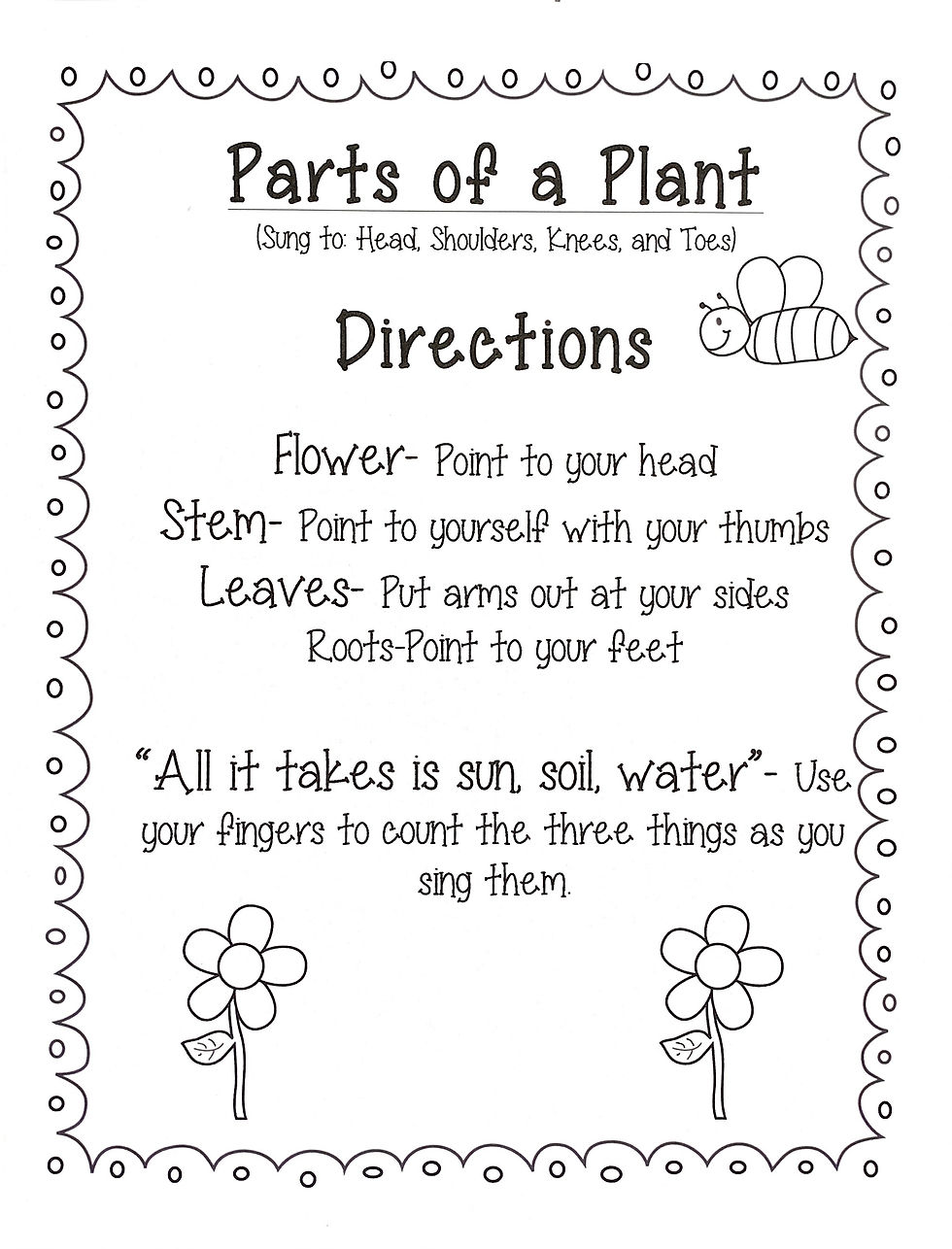
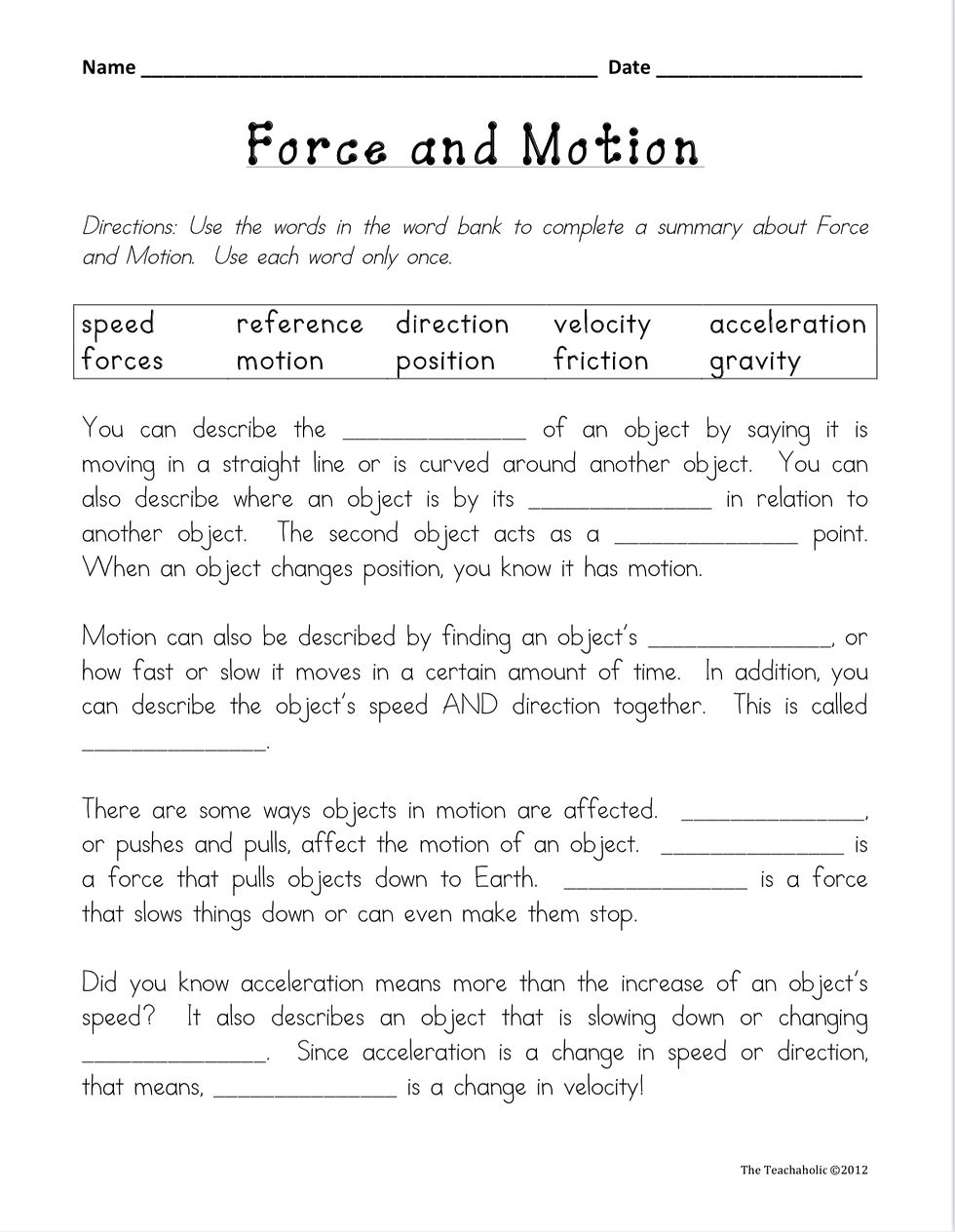
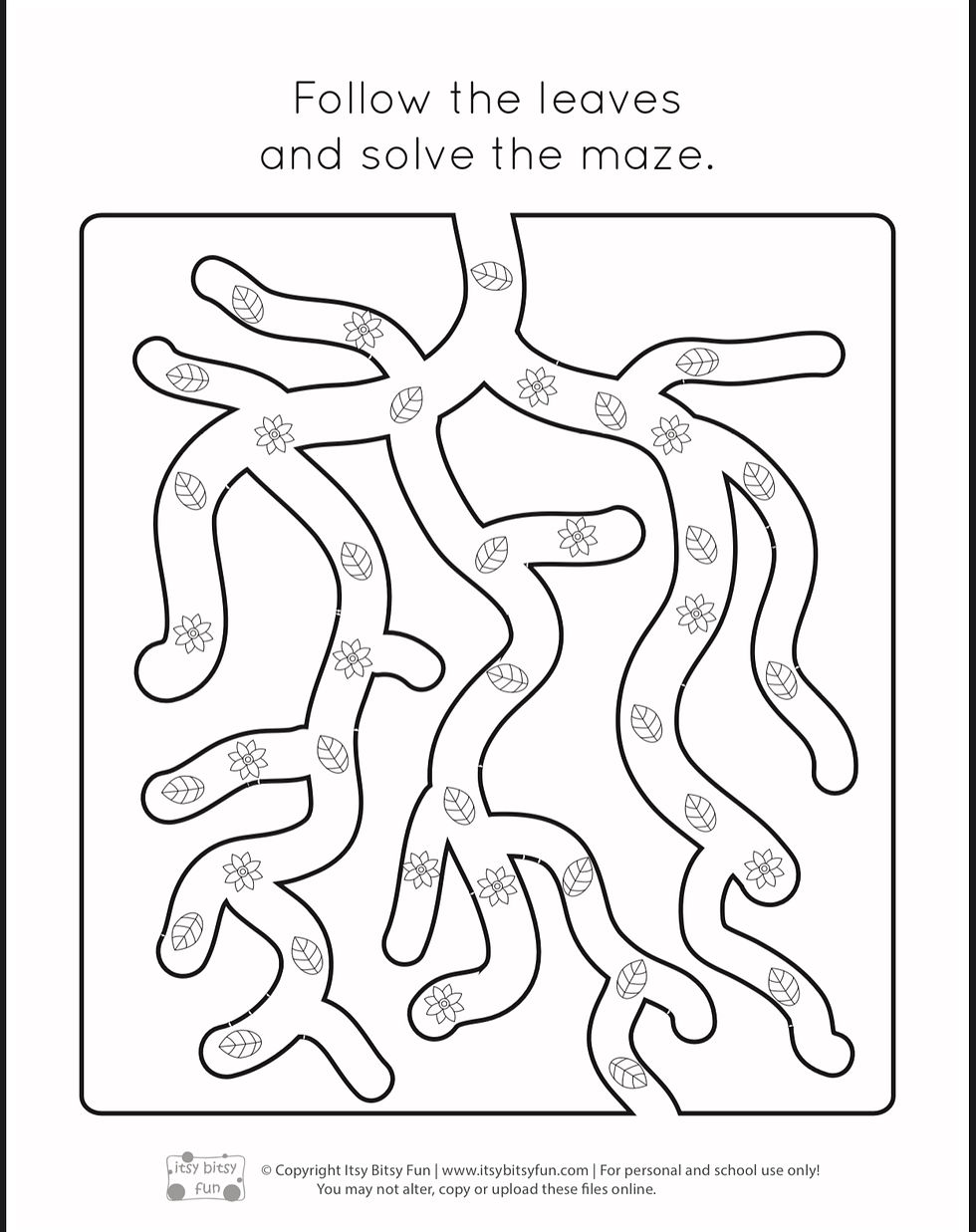

Analysis of What I Learned:
By conducting this five-day science-based lesson plan about The Parts of a Plant, I learned how to properly create measurable goals for my students. I learned how to use multiple methods of assessment by implementing virtual games and engage the students in their own learning. I learned how to monitor the students’ progress by creating different activities where the students had to create a plant by using materials they had at home and labeling each part. This meant students had to go outside to get all the materials. I learned to engage the students by doing something different like going outside and getting their materials ready for the class. I learned how to create a lesson plan that taught the many differences between plants like their color, shape, and structure by searching Pinterest and reading teacher blogs. By searching Pinterest it gave me different ideas on how to create my lesson plan.
Teaching at a distance definitely brought new challenges for me as the teacher and for the lesson plan as well. By creating and implementing lesson plans for students in a distance learning environment, I learned how to adapt my lesson plans to the learners who did not have internet access. I created a packet for the students without internet. This allowed them to complete the lesson at home. The students that had internet access watched the video recordings of myself explaining what they needed to do for each lesson. But with the students being in a distance learning environment I had to come up with ideas of materials they had at home that they could use for the science experiment.
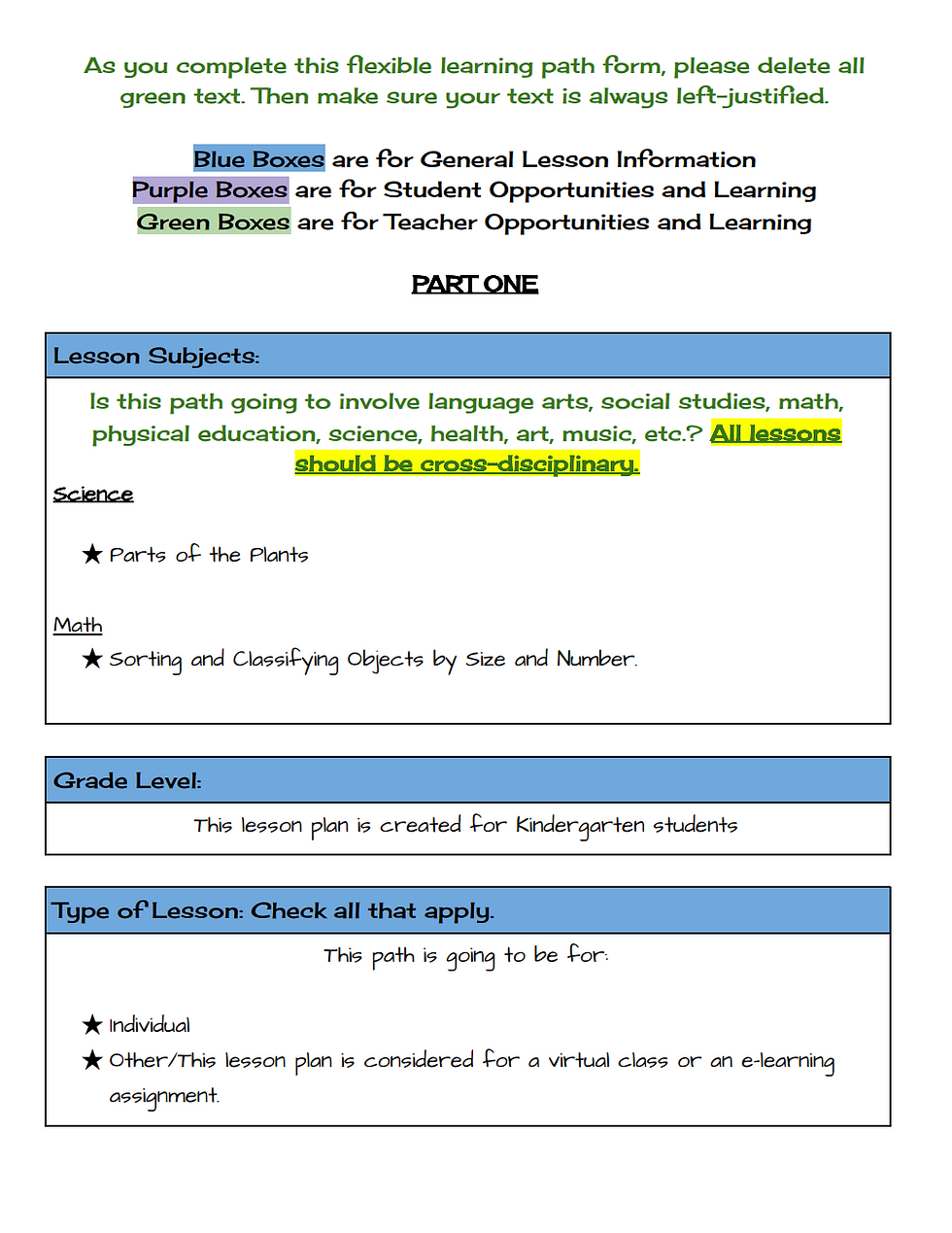
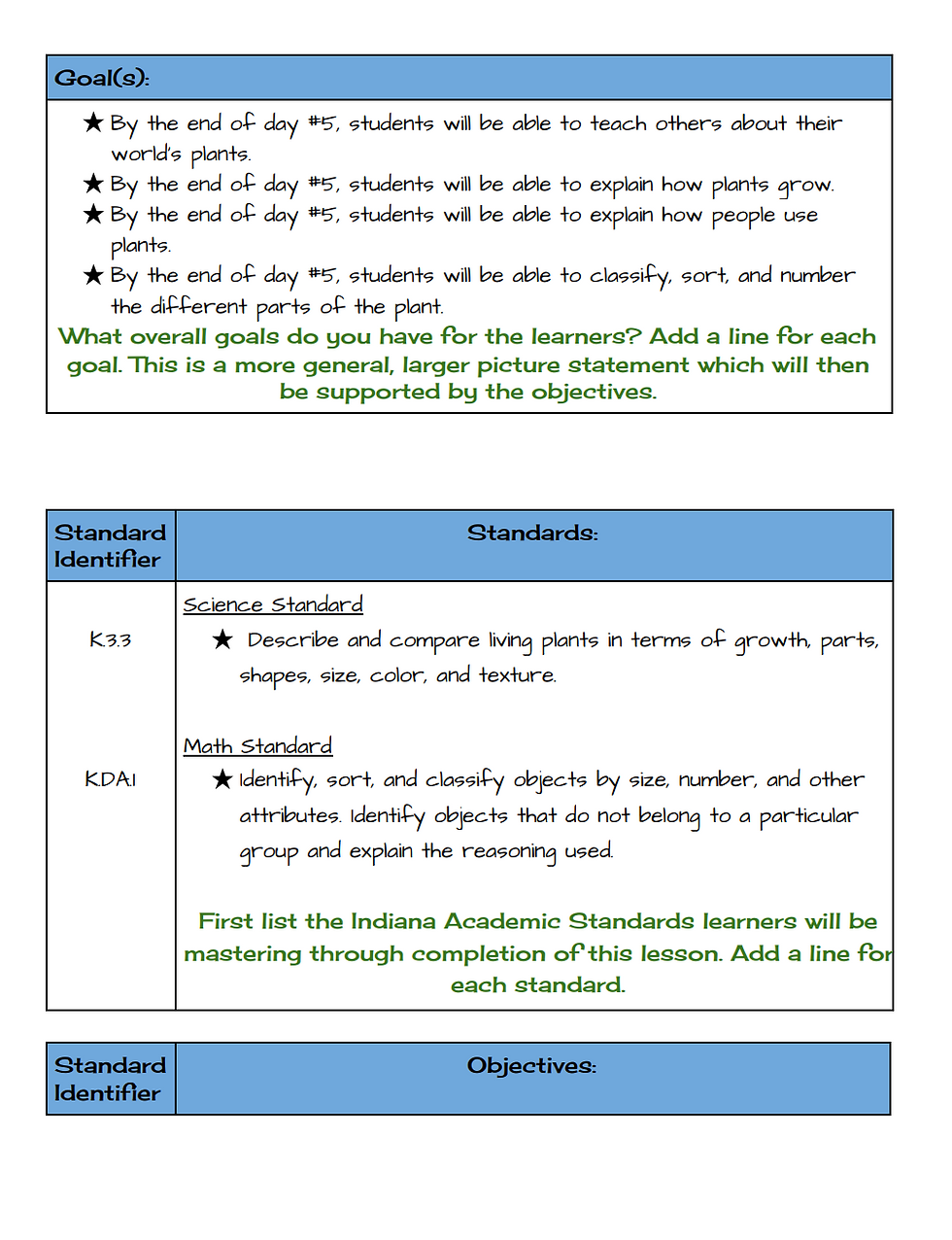
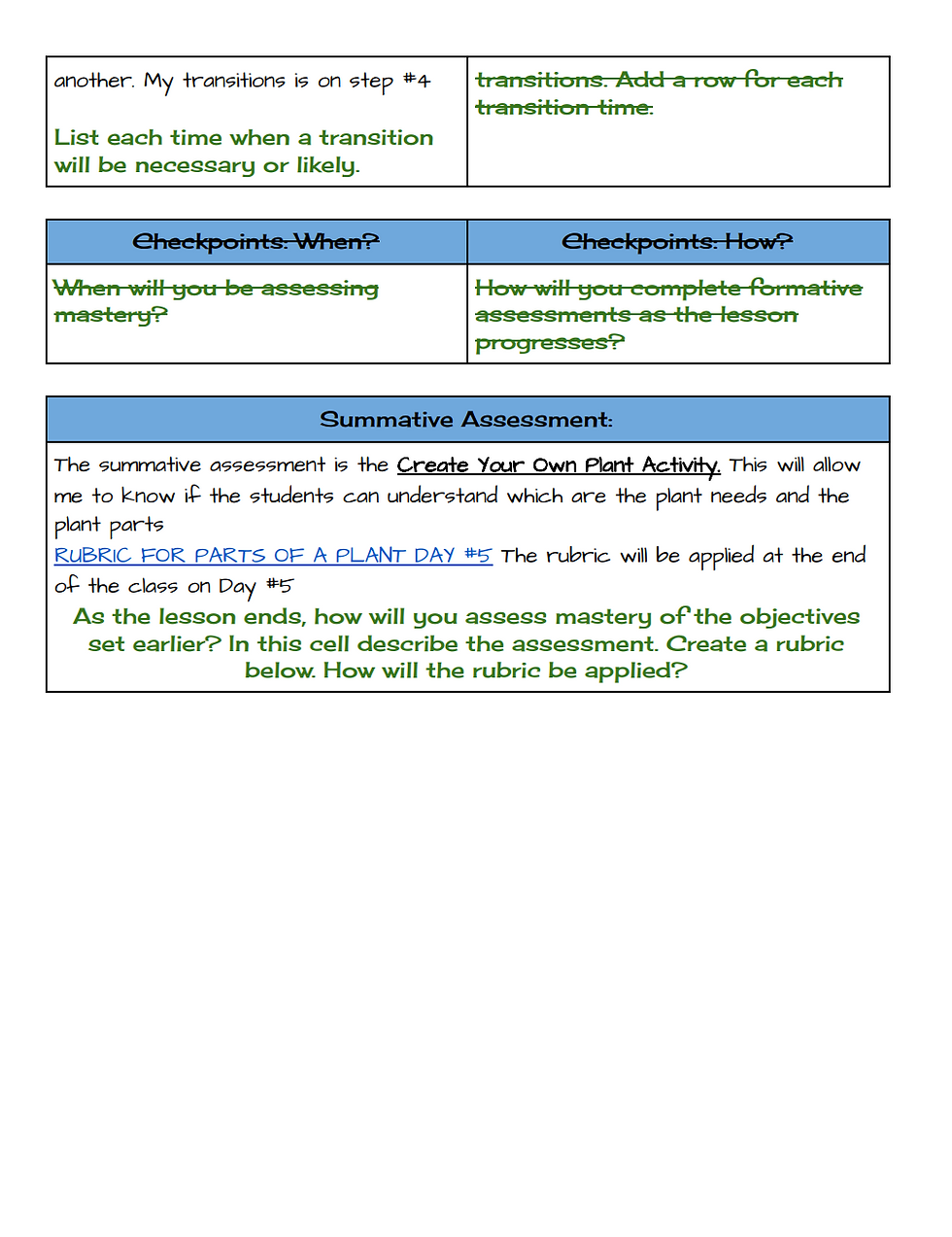

How This Artifact Demonstrates my Competence on the InTASC Standard:
I am able to demonstrate my competence in Standard #6 because my classmates and I created our own teacher group where I could bounce ideas from and this helps me to guide me and the student’s decision-making skills. In my future classroom, if the COVID-19 or any other similar situation rises, I feel confident that I would be better prepared. I chose John Dewey’s “Hands-on Approach” (Staff, 2021) by creating a lesson plan that allowed the students to have a hands-on learning experience, even though they would be completing it at home. John Dewey not only believed students learn by doing, but he also believed students draw from their previous knowledge to build upon what they already know and this lesson plan was a good way to implement this. I was able to use multiple methods of assessment by incorporating videos and virtual games to engage the students in their own learning. I was able to monitor the students’ progress by creating different activities where the students had to create a plant by using materials they had at home and labeling each part. I was able to engage the students by doing something different like going outside and getting their materials ready for the class. Because of COVID-19, I was not able to control their learning environment therefore I had to adapt my lesson plans to their new distance learning environment. I was able to create a lesson plan where I incorporated different assessments such as a song that was about the parts of the plants, virtual games that help me monitor their progress, videos that ensured the students were engaged in their own growth and being part of a teachers group created by my classmates to bounce ideas from to help me guide myself and my learner’s decision-making skills.